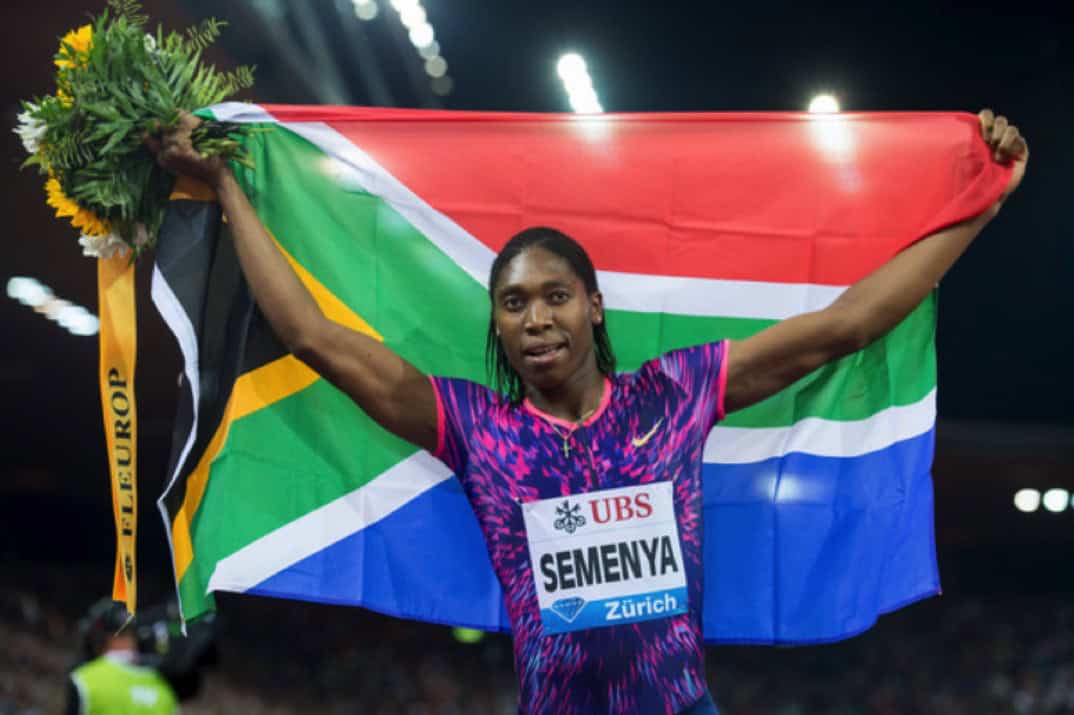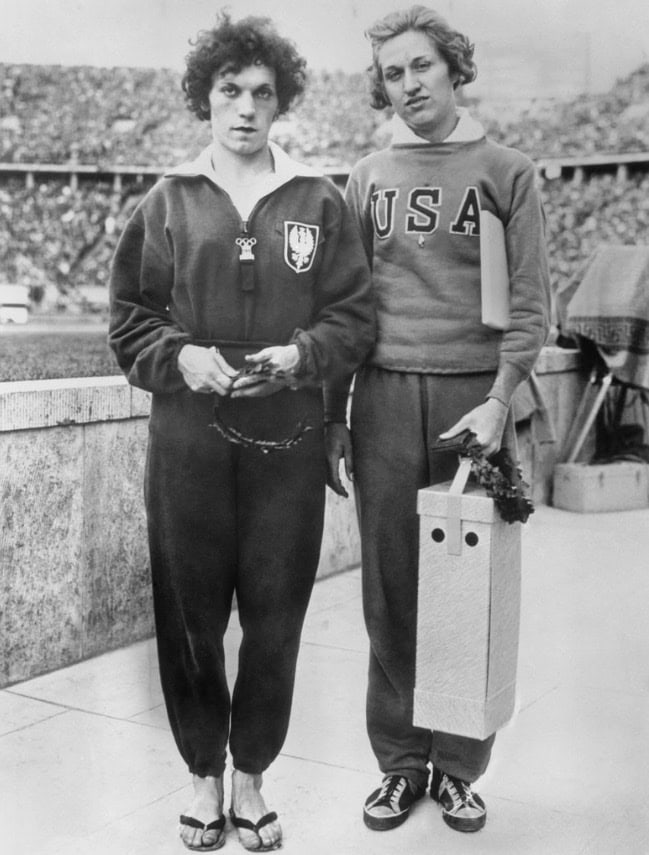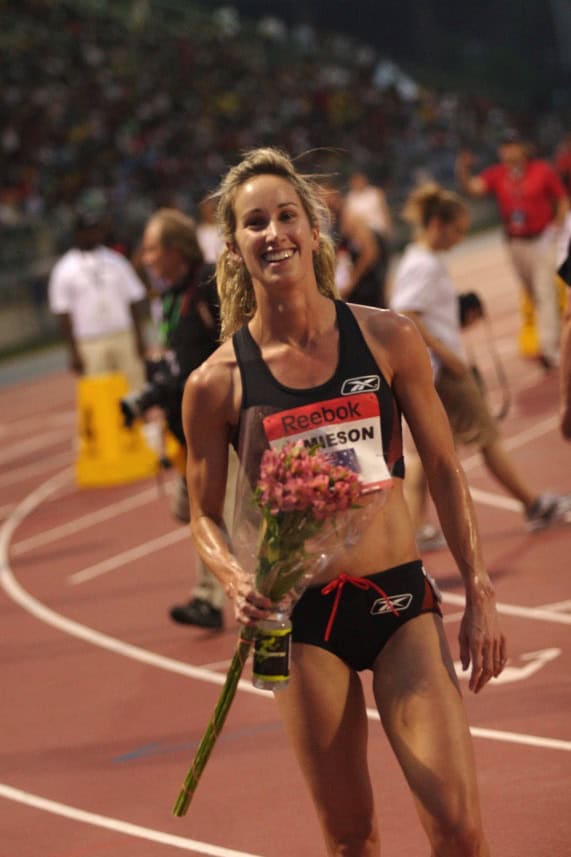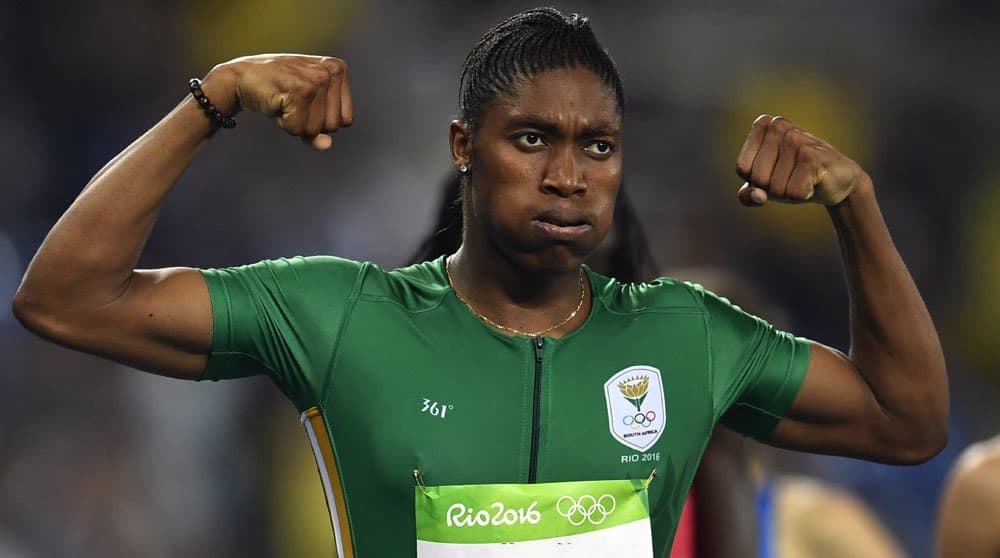By Matt Dawson – Runner’s Tribe
Olympic champion Caster Semenya has come to personify the modern controversy surrounding the participation of intersex and transgender athletes in elite women’s sport. She follows a long line of women of more ‘masculine appearance’ whose performances have raised eyebrows on the track.

Stella Walsh of Poland and Helen Stephens of the USA, the gold and silver medallists in the 100 metres at the 1936 Berlin Olympics, faced relentless speculation about their freakish performances and muscular physiques.

In the early 1940s a gender testing regime for female athletes was introduced. Femininity certificates were issued to athletes who passed a physical examination.
The invasive physical examinations were later junked in favour of chromosome testing. However, similar to testosterone testing, this form of testing was found to be unreliable and was eventually stopped.
Terminology explained
Intersex – A small percentage of babies are born with gender ambiguities e.g. variations to genitalia or chromosomes. While there is a lack of agreement on what constitutes an ‘intersex’ variation, the frequency of intersex newborns is believed to be between 0.02 per cent (1 in 5000) and 1.67 per cent (1 in 60).
Transgender – People born male at birth who make a decision to ‘transition’ to female (and vice versa). It is generally accepted that transgender women (male at birth) do derive a competitive advantage from the development of male anatomy through puberty. However, this advantage may be offset by the hormone treatments introduced during the transition phase.
Testing regime
The minimum waiting period for a male transitioning into professional female sport remains a point of controversy. The science is not yet settled on what is a necessary and reasonable transition period and whether testosterone is a reliable marker.
Testing regime
Fast-forward to 2009 and Caster Semenya’s victory in the women’s 800 metres at the World Athletics Championships led to a new testing regime predicated on female athletes having testosterone levels below 10 nanomoles per litre of blood.
In order to comply with the new rules, intersex athletes were required to take medication to control natural testosterone production and an unknown number of athletes also underwent genital surgery.
In 2015, 20-year-old Indian sprinter Dutee Chand challenged the validity of the International Association of Athletics Federation’s (IAAF) protocol, arguing testosterone was an arbitrary measure of athletic advantage.
The case went to the Court of Arbitration for Sport (CAS) which examined whether it was lawful to require female athletes to undergo surgery and ongoing treatment to block a naturally occurring hormone.
The court heard medical evidence which suggested the IAAF’s application of testosterone controls on intersex athletes did not account for the wide variations in testosterone levels among the female population. Nor did it consider that many women are insensitive to testosterone and may have high levels without any external indicia or competitive advantage being derived.
The CAS ruled in Chand’s favour, effectively overturning the IAAF’s testing regime and forcing it to go back to the drawing board.
This led to a new International Olympic Committee (IOC) determination on both intersex and transgender testing.
Intersex athletes were free to compete at the Rio Olympics in 2016 without any requirement to control naturally occurring testosterone levels.
On 19 January 2018, CAS reaffirmed that the IAAF intersex regulation will remain suspended while a new protocol, applying only to women’s middle-distance events – 400 metres to one mile – is examined.
After the IOC ruling in November 2015, transgender athletes were no longer required to undergo surgery, hormone therapy or wait two years post transition. So long as a male-to-female (MtF) transgender athlete maintains testosterone levels below 10 nanomoles per litre of blood for more than a year, she is eligible to compete in Olympic competition.
There is no restrictions on female-to-male transgender athletes. These transitions are less controversial because for most sports, male anatomy produces a competitive advantage.
Despite these changes, there are no openly transgender athletes competing at the Winter Olympics in PyeongChang, nor at the Summer Olympics in Rio in 2016.
Rio, PyeongChang and beyond
Under the new protocol Caster Semenya competed with success in Rio winning gold in the women’s 800m track race.
According to three-time Australian Olympian Sarah Jamieson the current approach, of allowing all intersex athletes who legally identify as female to compete without the requirement for genital surgery or hormone treatment, is the right approach.
“I feel like drugs was such a bigger issue. I’m sure there were hermaphrodites competing whilst I was competing.
“I think it’s not until you’ve got a hermaphrodite who is comes out and is actually quite gifted and starts winning. Bang the two come together and I guess Caster Semenya brought it all to light,” said Ms Jamieson, who competed in the 1500m in the 2000, 2004 and 2008 Games.

Jamieson, who still holds the 1500m national record, retired from athletics in 2009, the same year Semenya shot to prominence after winning the 800m at the World Championships in Berlin.
“If you’re born with more testosterone than the person next to you in the female category, in a way it’s good luck to you,” she said.
“I look at someone like Lauren Jackson [WNBA and Australian Olympic basketballer], who is 1.95 metres. She’s not blocked from playing basketball because she’s so tall – taller than 98 per cent of the female population.
“I think it’s ethically a bit unfair that we’re focusing on it so much.”
CLICK HERE FOR SARAH JAMIESON INTERVIEW
According to Dr Paul Blackman, Chief Medical Officer for Athletics Australia, any testing regime needs to have athlete welfare at its heart.
“The fundamental issue is that you’ve got to have a humanitarian approach… these are people. Being overly discriminatory starts to go back into the realm of other areas of discrimination in society which have been pretty roundly criticised in recent years,” he said.
Dr Blackman does not believe that testosterone is a more reliable indicator of athletic advantage for transgender athletes than it is for intersex.
“That’s debatable. The science is far from settled… some endocrinologists will argue that the effects of testosterone are life-long, which means that if a transgender athlete competes after puberty then they have a life-long benefit,” he said.
“There is some science to support that…but that does not say it’s proven. True scientists will say the science is never settled.”
CLICK HERE FOR PAUL BLACKMAN INTERVIEW
Transgender transitions
The situation is more complicated for male to female transgender athletes. According Kirsti Miller, a transgender player in the Broken Hill women’s Australian Football League in remote New South Wales, the current focus on testosterone levels is misguided.
“Testosterone is a naturally occurring substance in your body, it’s not artificially put there. It’s no different to someone being born with bigger lungs or longer arm spread.
“We’ve all got advantages and disadvantages. Testosterone alone plays very little part in improving athletic performance,” Ms Miller said.
Prior to 2016, even as an amateur player, Kirsti was required to comply with the AFL’s guidelines which mirrored the IOC rules.
“This requires self-identification, a four-year commitment that you’ll compete as a woman and controlling your testosterone level below 10 nanomoles per litre of blood for at least 12 months before you start competing.”
While Kirsti thinks the 2016 AFL protocol was an improvement on the 2009 version, she has concerns about how they impact on athletes’ health.
“I need at least 10 nanomoles of testosterone per litre of blood to led a healthy life. My body can’t produce testosterone and if I receive testosterone, I don’t have receptors anyway.
“I need more testosterone than an XX female. The sports bodies are asking me to do something very unhealthy,” Ms Miller said.


CLICK HERE FOR KIRSTI MILLER INTERVIEW
Quiet progress is being made behind the scenes to make the rules fairer for intersex and transgender athletes.
Despite this, intersex and transgender still have some deeply entrenched societal views and prejudices to overcome.
End
Column by Matt Dawson – Published on RT with permsion – http://dawsonreport2018.blogspot.com.au
